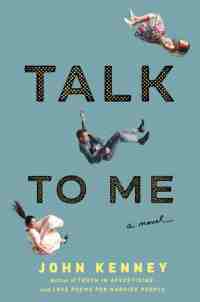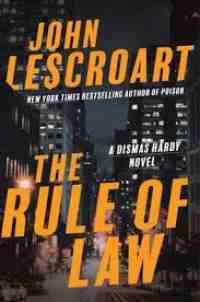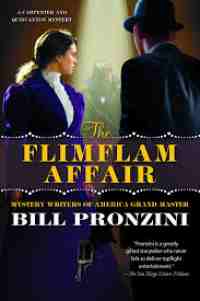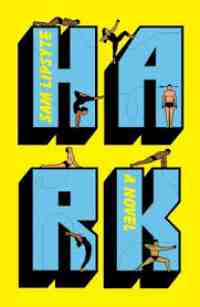48 Hours by William R. Forstchen
 Friday, January 25, 2019 at 7:26AM
Friday, January 25, 2019 at 7:26AM 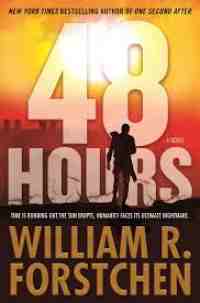
Published by Forge on January 8, 2019
48 Hours combines a pre-apocalyptic story with a bit of prepper porn (novels, mostly self-published, about survivalists who imagine dire emergencies that justify the huge investments they have made in bugout bags, cases of canned beans, and caches of guns). The story imagines two relatively simultaneous solar events that will screw with humankind. A solar storm (coronal mass ejection, or CME) disrupts the planet’s magnetosphere, quickly followed by a solar flare that irradiates the Earth and kills every life form that isn’t sheltered deep underground (deeper than a prepper’s basement). That’s a bad day for people who don’t dwell in caves.
The story explains that solar flares usually precede rather than follow a CME, and that the magnetosphere therefore protects us from the flare’s radiation. Apparently the two events happening in reverse order and both moving straight at the Earth is a rare occurrence, which is why we’re not all dead. I don’t know how accurate the science underlying the story might be, but William Forstchen sold me on the premise. Part of the premise — the part that kept me reading — is that the science characters aren’t sure whether the flare will hit the Earth before the CME (most everyone dies) or after the CME (most everyone lives although their iPhones die).
The story begins with a prepper (an ex-military guy named Darren Brooks) who congratulates himself on his generosity when he shares buckets of freeze-dried meals with his neighbors after a preliminary CME (all the while worried that if CMEs continue, he may have to shoot his neighbors to prevent them from devouring his hoarded survivalist supplies). Darren is a big, strong guy who knows all about guns, which in prepper porn proves his moral superiority to smaller people who know about other things.
Darren is head of security at a Kraft plant in Missouri. The plant is located next to a big cavern with steel doors. It turns out that the government has stored a bunch of survivalist supplies in the cavern as a contingency plan against an extermination event. The planners hoped to supplement the supplies with any processed cheese and other long-lasting foodstuffs that might be stored in the Kraft plant. The government’s plan, naturally enough, is to save the elected politicians, their families, and their campaign donors. Their rationale is that “continuity of government” will be important after the crisis ends — because a dead planet needs a government?
Darren learns about the plan from an army general with whom he served in Iraq. The general is in Missouri to make the shelter ready for occupancy by local government leaders. Darren decides to change the plan by saving the town’s children instead.
Darren’s assumption that he has the moral authority to change the plan is questionable, but at least it’s an interesting premise. Allowing children to inherit a decimated and parentless Missouri might be better than allowing politicians to inherit it, although the orphaned kids might disagree. And while there is superficial appeal in saving kids rather than “elites,” it seems to me that Darren makes himself an “elite” (and unelected dictator) by using force to seize to seize the shelter and deciding who gets to occupy it.
Darren’s plan and its aftermath are at least more interesting than the ridiculous speeches given by characters who decide to save the children. Eventually they realize that they need more adults to supervise the kids so the teenagers won’t spend all their time fornicating. To that end, Darren’s pastor designates a respected principal to choose “the best of our community” (presumably reliable white conservative Christians who know how to handle guns, and certainly none of those whacky academics who get people all worked up about climate change — Darren has no use for academics). How is Darren’s delegation of authority to a pastor and a principal any different from the politicians choosing who gets to survive? Politicians at least were elected to make choices; nobody elected Darren or his pastor. The ethical implications of the plan might make for some interesting discussions, but the novel fails to explore those implications in any depth.
Darren, a true prepper, tithes to his church because his pastor believes in the end times and the church uses the funds to buy and store survivalist supplies. The church contributes not one, not two, but four tractor-trailers filled with survivalist meals. Do churches really do that? Instead of feeding the needy today, they store freeze-dried food just in case the end times come? Seriously?
Richard Carrington, an aging sun scientist, is the novel’s other primary character. He has some interesting thoughts about history and science while he’s drinking tea with the president. As the disaster nears, other characters tell Carrington about mobs and looting, but all of that is off-stage. Most of the novel’s action takes place in Missouri and involves clashes between Darren’s side and the politicians’ side, with members of the military choosing one side or the other as the potential end of humanity draws near. That gives Forstchen a chance to describe the armament of various fighting vehicles as they shoot missiles at each other.
A compelling story could be based on the notion that federal, state, and local governments have spent huge amounts of taxpayer money to create plans to save politicians while the taxpayers who elected them will die in whatever catastrophe arises. Forstchen tries to write that story, but his focus is too narrow to do it justice.
Forstchen writes well enough to have gained bestseller status in some earlier novels. 48 Hours reveals an addiction to adverbs and other unnecessary words, including “indeed,” which appears dozens of times. I was on the fence about whether to give this a “Recommended with Reservations” or a “Not Recommended” until, near the novel’s end, I encountered the phrase “orgy of destruction.” 48 Hours is not overridden with clichéd phrases, but the story and its characters are so cliché-dependent, and the plot is so shallow and sappy, that the novel has too little to offer a discerning fan of pre- or post-apocalyptic fiction. I suspect, however, that 48 Hours will have great appeal to fans of prepper porn.
NOT RECOMMENDED
